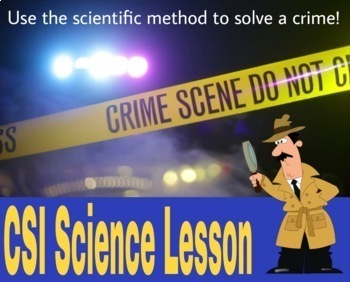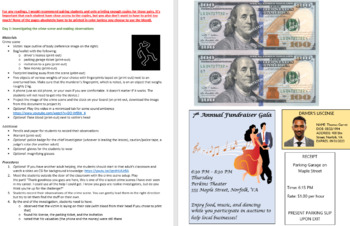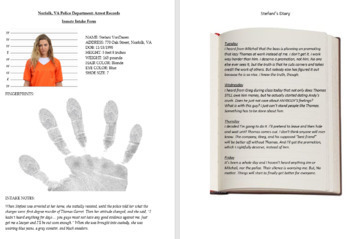CSI Science Lesson - Use the Scientific Method to Solve a Crime!
- Word Document File
What educators are saying
Description
Hello! Thank you for considering my product. I run an after-school science club for the fifth-graders and after telling the students about a murder mystery dinner I had recently attended, they were BEGGING for me to set something up that was similar. So, I did! This lesson is very PG and does not include anything gruesome or inappropriate for intermediate elementary children.
In this lesson, which is designed to span 3 days, students use the scientific method to solve a crime:
First, they make observations at the scene of the crime.
Next, they do an investigation to identify the murder weapon using Force = Mass x Acceleration, based on additional evidence from the autopsy.
Then, they do research about people connected to the victims by reading phone records and interrogation write-ups.
Lastly, they make an inference about who they think did it, present their findings to a judge who will issue them a warrant, and in doing so they find the last and final piece of evidence.
There, they can draw their conclusion and the case comes to a close.
This document includes:
- Lesson plans that explain what to do day-by-day
- Print-outs of all crime scene materials
- Links and resources to background information and immersive scenes
- Print-outs of the warrants, the forensic analysis report, the phone records, and the interrogation write-ups
- A data and questions sheet for students to conduct an investigation about the murder weapon
- A print-out of a description of the arrest and the final piece of evidence
The only additional materials that you absolutely need are tape, an empty box, a bag/wallet, and random objects of various weights.
Additional resources that are not necessary, but add to the fun, are an additional adult to play the part of the judge, police/judge costume pieces, caution tape for the crime scene, and gloves and magnifying glasses for the students to use.
Once again, this lesson is very PG. The only mention of anything violent is the forensic analyst's report that simply says the victim died from a blow to the head. No bloody or gore-y images appear anywhere. All language and topics of conversation in the records are age-appropriate.





